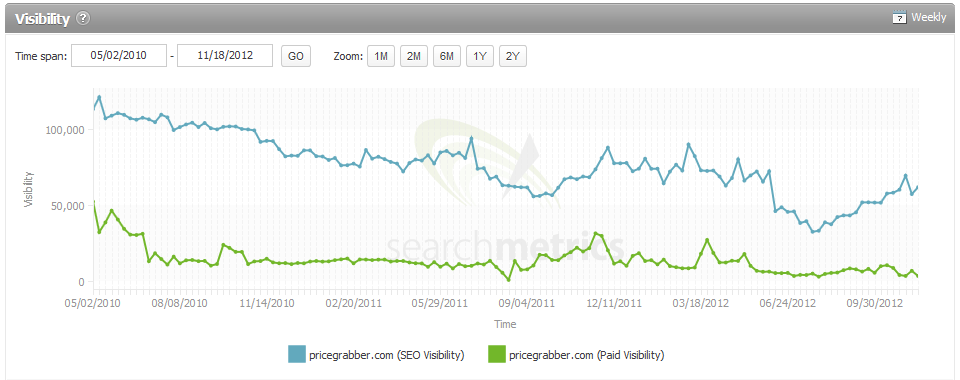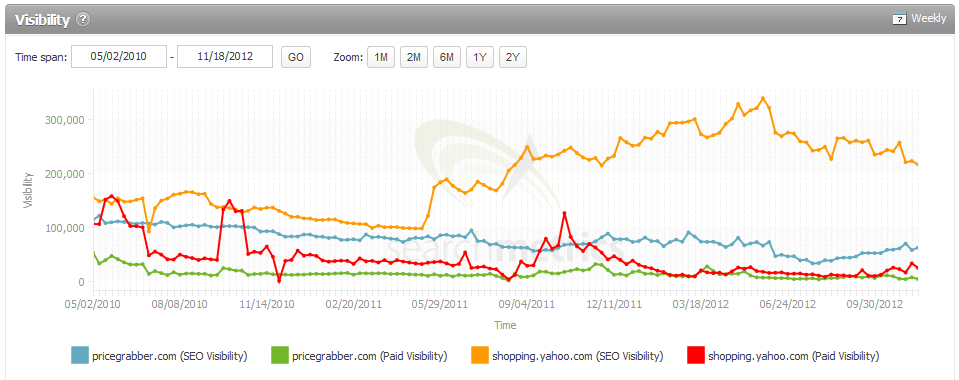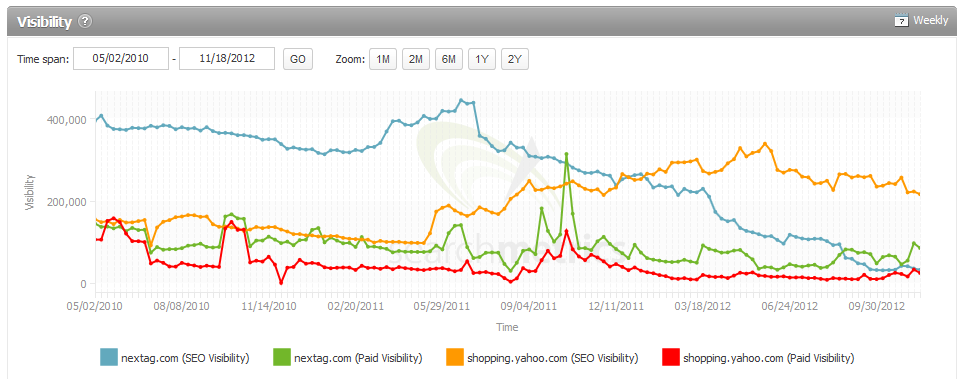How to Obfuscate And Misdirect an Algo Update
Sharing is caring!
Please share :)
Embed code is here.
If you find the following a bit hard to read due to font size, a wider version is located here.
Categories: google
The ‘Scam’ Site That Never Launched
(A case study in being PRE negatively seo’ed)
Well it has been a fun year in search. Having had various sites that I thought were quality, completely burnt by Google since they started with the Penguins and Pandas and other penalties, I thought i would try something that I KNEW Google would love….. Something dare I say would be “bulletproof.” Something I could go to bed, knowing it would be there the next day in Google’s loving arms. Something I could focus on and be proud of.
Something I could focus on and be proud of.
Enter www.buymycar.com, an idea I had wanted to do for some time, where people list a car and it gets sent to a network of dealers who bid on it from a secure area. A simple idea but FAR from simple to implement.
Notes I made prior to launch to please Google and to give it a fighting chance were:
- To have an actual service and not to be an affiliate. Google crushed my affiliate sites and we know they are not fond of them as they want to be the only affiliate I think.
- To make sure the content was of a high quality. I took this so seriously that we actually made a point of linking out to direct competition where it helped to do so. This was almost physically painful to do! But I thought I would start as I meant to go on. I remember paying the content guy that helps me, triple his normal fee to go above and beyond normal research for the articles in our “sell my car” and “value my car” sections.
- To make the site socially likeable. I wanted something that people would share and as such to sacrifice profits in the short term to get it established.
- To give Google the things it loves on-site. Speed testing, webmaster tools error checking (even got a little well done from Google for having no errors, bless), user testing, sitemaps for big G to find our content more easily, fast hosting, letting it have full access with analytics…
- TO NEVER, EVER UNDER ANY CIRCUMSTANCES PAY FOR A LINK. Yes, I figured I would put all the investment into the site and content this time. If it went how I had hoped perhaps I could find the holy grail where site’s link to us willingly without a financial incentive! A grail I had been chasing for some years. Could people really link out without being paid? I had once heard a rumour it was possible and I wanted to investigate it……
Satisfied I had ticked all the boxes from hours of Matt Cutts video’s and Google guidelines documents, I went to work and stopped SEO on all my smaller sites that were out of favour. I was enjoying building what I had hoped would be a useful site and kicked myself for not having done so sooner. I also thanked Google mentally for being smart enough now to reward better sites.
Fast forward 4 months of testing and re testing and signing up car dealers across the country and I decided to do a cursory check to see if anyone had liked what I was building and linked to it. I put my site into ahrefs.com and to my surprise, 13,208 sites had!! What was also nice was that all of them had used the anchor text “Buy My Car Scam” and had been so kind as to give me worldwide exposure on .ru, .br and .fr sites in blog comments amongst others. 
In seriousness, this was absolutely devastating to see.
A worried competitor had obviously decided I was a threat and to nip my site in the bud with Google and attack it before it had even fully started. The live launch date was scheduled for January 7th, 2013! I was aware of negative SEO from other sites I had lost but not in advance of actually having any traffic or rankings. Now I was faced with death by Google rankings to look forward to before it had any rankings, add to that my site being cited as a scam across the Internet before it launched!
My options were immediately as follows:
- Go back and nuke the likely candidates in Google who had sabotaged me. Not really an option as I think it is the lowest of the low.
- Start trying to contact 13,000+ link owners to ask for the links to be removed. When I am heavily invested in this project anyway and have a deadline to reach, this was not an option. Also, Xrummer, Scrapebox or other automated tools could send another 13,000 just as easily in hours for me to deal with.
- Disavow links with Google. To download all the links, disavow them all and hope that Google would show me mercy in the few months Matt Cutts said it takes to get to them all removed.
- Give up the project. Radical as this may sound, it did go through my mind as organic traffic was a big part of my business plan. Thankfully I was talked out of it and it would be “letting them win.”
I opted for number 3, the disavow method but wondered what would happen if I kept being sent 10’s of thousands more links and how a new site can actually have any protection from this? To set back a site months in its early stages is devastating to a new on-line business. To be in a climate where it is done prior to launch is ridiculous. 
Had I fired back at future competitors as many suggested I did, there would be a knock on effect that makes me wonder if in the months to come, everyone will be doing it to each other as routine. Having been in SEO for years I always knew it was possible to sabotage sites but never thought it would become so common and before they even ranked!
Robert Prime is a self employed web developer based in East Sussex, England. You can follow him on Twitter at @RobertPrime.
Our Looking into the Crystal Ball of 2013 Predications Post
It’s hard to believe it is the middle of December and a whole year has blown by. To say 2012 was an interesting year would be an understatement, one thing is for sure, it was never dull!
Some of the SEOBook Moderators and I want to share what we feel will be hot (or not) in 2013, we have a diverse mixture of topics, opinions and practical marketing tactics for you to consider. First up is our fearless leader Aaron Wall!
Aaron Wall
Google Verticals
I believe we’ll see additional Google verticals launched (soon) and they’ll be added to the organic search listings. My guess is that (now that the advisor ad units are below AdWords) we can expect to see Google seriously step into education & insurance next year. I also expect them to vastly expand their automotive category in 2013.
SEO’s Move On
Tired by the pace of change & instability in the search ecosystem (along with the “2 books of guidelines” approach of enforcement in the search ecosystem), many people who are known as SEOs will move on in 2013. Many of these will be via acquisitions, and many more will be due to people simply hanging it up & moving on.
Rebranding Away From SEO
A company in the SEO niche that has long been known as an SEO company will rebrand away from the term SEO. After that happens, that will lead to a further polarization of public discourse (where most anything that is effective and profitable gets branded as being spam), only further fueling #2.
Geordie Carswell from Clearly Canadian (err, we mean here)
Adwords
Regarding Adwords, Google will aggressively dial up Quality Scores on keywords that have languished in activity due to low-QS but haven’t yet been deleted by advertisers. They seem to have given Quality Scores a bump across the board in Q4, bringing in unexpected increases in traffic and cost to advertisers who weren’t aware ‘dormant’ keywords were even still in their accounts. It’s a fantastic revenue generator almost on-demand for Google if the quarterly numbers aren’t looking good.
Peter DaVanzo (aka Kiwi)
Building Brand
More focus on building brands i.e. the people behind the site, their story, their history.
This is to encourage higher levels of engagement, leading to increased loyalty. Making the most of the traffic we already have
Eric Covino (aka vanillacoke)
SEO Diversifies
I think the industry will continue to become more divisive as more people either get out or go more underground and those that continue to remain overly-public will continue to invent language to serve their own commercial purposes while chastising those who do not fall in line; labeling these folks as spammers and bad for the industry in desperate attempts at differentiation so they can continue to try and sell to brands and the lower part of the consumer pyramid (read: mindless sheep)
There will be exceptions where the company will do and probably continue to do really well, but largely those who try and move from being pure SEO agencies to full service [insert new term here] ad-type agencies will fail at delivering real value to their clients. These people will resort to more outing and public spam report filings despite their amusing posts on how they are “different” and “clean”. I believe this will spawn a return of enterprise-level SEO services to competent SEO’s and SEO firms but not to the “point, link, report ranking agencies”. I believe the latter will die a faster death in 2013. Technical proficiency in SEO will become more and more valuable as well, especially if enterprise-level SEO returns as I think it will.
SEO Pricing Structures Will Change
A fractured search landscape where data is harder to come by (not provided, rank checking issues, mobile disruption) in addition to frequent algo shifts and confusion with local rankings will make low-cost SEO much harder to justify and measure, especially in the local area. These issues, coupled with the rising cost of doing business online, will make low to even moderate budget SEO (really low 4 figures or high 3 figures per month) difficult to provide effectively and profitably over a sustained period of time.
The closing window will stay somewhat wide for those that stay around and can afford to take down the margins a bit on some projects. This would be a result of a fairy sizable exodus from the industry as a whole (the self-SEO crowd, for lack of a better term)
Debra Mastaler from Alliance Link
Mobile Applications (apps) and Content for Them
Doesn’t it seem like everyone has been talking about the mobile explosion for years now? I’m jumping on that bandwagon but from a slightly different angle.
If your product lends itself to having an app, I’d urge you to get one started, even if it’s a basic program or you have to partner with someone to make it happen. Recent statistics show there are one billion smart phone users and five billion mobile phone users in the world; being seen on mobile devices is no longer a novelty when those kinds of numbers are involved. So how do you get your content in front of mobile users?
For Android fans, you can turn your best content into an Android App by using tools like AppsGeyser. Their simple three step process allows you to create apps by using content you’ve already written or showcasing a widget you have in service. If you have evergreen content or a popular widget a lot of people download, create an app to keep them one click away and receiving fresh streams of content from your site.
If you’re in a space already filled with apps or can’t create one, consider creating unique content to go with what is out there. For example, novelist Robin Sloan created an iPhone app for “tappable” content. To move the story along, you tap the screen to the next page. It is a super simple concept that has exploded over the Internet. (For more tappable story examples visit here) creating this kind of content sets you apart from your competitors and provides you with a fresh news angle to pitch the media.
If you do create an app, add it to popular download sites like iTunes but make it exclusively available on your website first.
(Tip: Search on “content for iPad” for ideas on creating unique content for tablets and then use the suggestions above to promote them)
Video
OK, more impressive stats to start this section:
“In general, we know that 800 million people around the world use YouTube each month, a stat that I’m sure we’re going to see increase to a billion soon. And nearly all 100 of AdAge’s top 100 advertisers have run ad campaigns on YouTube and Google Display Network–98 in fact.”
There is the word “billion” again! But there’s more and it comes appropriately, right after my pitch for mobile apps:
…”mobile access, which gets over 600 million views a day, tripled in 2011.”
They are talking about access to YouTube here, that’s an astonishing number of views per day. Add to it video results have a tendency to:
- be shown in the first fold of the organic search results (so annoying)
- help make a site “sticky”
- are easily passed around social media sites “like” Facebook
Three sound reasons why you should be involved in making and promoting video in 2013. Since video works well on smartphones, I’d focus equal resources on creating, optimizing and promoting video and written content in 2013. Check out what top brands are doing on YouTube for promotion ideas, where they’re pimping their vids and how. (And an app to play them on, see above) J
Content Partnerships and Variety is a Search Spice
I think everyone will agree using “content” is the tactic du jour when it comes to attracting links and traffic. I expect the trend to continue and with good reason, online news outlets, magazines and topical blogs are as eager to run good content as webmasters are to place it. Finding good outlets will be key, when you do, consider developing a “content partnership” with a set number of sites and negotiate to place more than written content.
What is a content partnership? In a nutshell it’s an exclusive commitment you have to provide content to a set number of sites. You find a handful of authoritative sites to write for and negotiate the amount and type of content you want to submit. They in turn, get a steady stream of well-produced content and build a solid editorial team. Win-win!
In a perfect world it’s best to be the only one writing on a topic but we all know perfection is hard to achieve. In that case, zero in on what you want to write about and approach an outlet with a narrow focus. For example, instead of saying “I’ll write all your baby food articles”, say, “I’ll provide articles, podcasts and videos on natural and organic baby food”. You are much more likely to get what you want if you agree to create content on a specific subject rather than a broad or general topic.
Authentic networking will be key in the future, lock down your sources early and take advantage of the popularity boost you’ll receive associating with highly visible, authority sites in your niche. Use a variety of content methods, the public doesn’t live on written content alone. Video, news and images dominate universal search results; create this type of content so you improve your chances of being seen especially if brands dominate your sector. (So annoying!)
Will Spencer from Tech FAQ
The Value of Links
With Google penalizing obviously generated links instead of simply ignoring them, the value of less-obviously generated links will continue to rise. This will result in higher prices for paid links and an improved return on investment for those links. It will also bring link trading back in vogue, particularly with three-way linking.
We’ll be paying more (or charging more) for links than ever before. With most links being discounted or penalized, it will require fewer links to rank — but those links will have to be acquired at higher prices.
Anita Campbell from Small Business Trends
Website Design Goes Pinterest
We are seeing more websites and blogs designed and displayed a la Pinterest. Content appears in visual boxes with limited text. With that comes a lot more of the infinite scroll – the page that never ends. The new Mashable design is an example. It is hard to tell whether this is a short term fad or a long term trend – but when you have an infinite scrolling page the footer often goes. So all those footer links – well, many may go away.
Social Media Gets the Blender Effect
Social media aggregators are popping up like mushrooms. Tools like Rebelmouse, Scoop.it, Paper.li and a dozen more grab Facebook posts, tweets, retweets and/or blog posts, and mix them all together in a visually appealing presentation that you can embed on your own domain. Some of these tools are not so hot for SEO (all the content is in javascript and/or iframes) or they duplicate a page that resides on the tool’s own site, and search agencies will have to get good at sorting them out and explaining the pros and cons to clients who say “I want one!”
The Line Between Content and Advertising Further Blurs:
The CPM rates of banner ads continue to drop, and the standard banner ad sizes are less appealing except as AdWords. The hot types of advertising today are:
- Rich media such as ads that slide out or down when you slide over or large videos that begin to play, and larger sizes that take up a lot of space on the page (even Google this year introduced the 300 x 600 “half-page” size ad);
- “Native ads” which are ads that sites like Twitter and Facebook sell such as sponsored tweets and sponsored posts – leading to the further commercialization of social media;
- Sponsored content, such as sponsored blog posts and sponsored content features on news sites.
There are different schools of thought around sponsored content, and publishers and agencies need to understand the differences and figure out where they want to play. The natural tendency of many SEO professionals is to think of sponsored content purely as link building. But in my experience, sponsors can have many goals and they may have nothing to do with link building. For many sponsors, their goals are branding, product launch exposure, co-citation/co-reference, thought leadership, sales lead generation, general PR, and/or building positive social media sentiment.
Depending on the sponsor’s goals, sponsored content covers a wide range. It can range from run-of-the-mill link buying and selling, to various levels of guest blog posting (“spun” junk to high quality well-researched articles), to custom-written content pieces such as articles, eBooks and webinars that are clearly labeled as sponsored, designed to build thought leadership, reach out to new audiences, and to associate the sponsor’s name with certain topics.
Marketing agencies will want to sort out the client’s objectives, and also educate clients on the broader benefits to be had from sponsored content.
Now you know our thoughts for 2013, what are yours?
On behalf of everyone here at SEOBook, we wish you a joyous holiday season and much success in 2013!
Debra Mastaler is an experienced link building & publicity expert who has trained clients for over a decade at Alliance-Link. She is the link building moderator of our SEO Community & can be found on Twitter @DebraMastaler.
Manage Your Reputation

How much value do you place on your good reputation?
If we looked at it purely from a financial point of view, our reputations help us get work, make money, and be more influential. On a personal level, a good name is something of which you can be proud. It is something tangible that makes you feel good.
You’re Everywhere
As it becomes increasingly easy for people to make their feelings known and published far and wide, many businesses are implementing reputation management strategies to help protect their good name.
This area used to be the domain of big business, who employed teams of PR and legal specialists to nurture, defend and promote established brands. Unlike small business, which didn’t have to worry about what someone on the other side of the country might have said about them as it didn’t affect business in their locality, larger entities were exposed nationally, and often internationally. It was also difficult for an individual to spread their grievance, unless it was picked up by mainstream media.
These days, everything is instant and international. Those with a grievance can be heard far and wide, without the need to get media involved. We hear about problems with brands across the other side of the country, or the world, just as easily as we hear about them in our own regions, or market niches. If someone is getting hammered in the search industry, you and I probably both hear about it, at roughly the same time. And so will everyone else.
Media stories don’t even have to be true, of course. False information travels just as fast, if not faster, than truth. Given the potential, it’s a wonder reputation problems don’t occur more often that they do.
This is why reputation management is becoming increasingly important for smaller firms and individuals. No matter how good you are at what you do, it’s impossible to please everyone all the time, so it’s quite possible someone could damage your good name at some point.
Much of the reputation management area is obvious and common sense, but certainly worth taking time to consider, especially if you haven’t looked at reputation issues up until now. When people search on your name, do they find an accurate representation of who you are and what you’re about? Is the information outdated? Are you seen in the same places as you competition? How does their reputation compare to yours?
Also, some marketers offer reputation monitoring and management as an add-one service to clients so it can be a potential new revenue stream for those offering consultancy services.
The Indelible Nature Of The Internet
In some respects, I’m glad the internet – as we know it – wasn’t around when I was at school. There were far too many regrettable nights that, these days, would be recorded from various angles on smartphones and uploaded to YouTube before anyone can say “that isn’t mine, officer!”
You’ve got to feel sorry for some of the kids today. Kids being kids, they sometimes do stupid things, but these days a record of stupidity is likely to hang around “forever”. Perhaps their grand-kids will get a laugh one day. Perhaps the recruiter won’t.
Something similar could happen to you, or your firm. One careless employee saying the wrong thing and the record could show up in search engines for a long time. If you’re building a brand, whether personal or related to a business, you need to look after it, nurture it, and defend it, if need be. We’ll look at a few practical ways to do so.
On the flip side, of course, the internet can help establish and spread your good reputation very quickly. We’ll also look at ways to push your good reputation.
Modern Media Is A Conversation
People talk.
These days, no matter how big a firm is, they can’t hide behind PR and receptionists. If they don’t want to join the conversation, so be it – it will go on all around them, regardless. If they aren’t part of it, then they risk the conversation being dictated by others.
So a big part of online reputation management is about getting involved in the conversation, and framing it, where possible i.e. have the conversation on your terms.
Be Proactive
Most us haven’t got time to constantly monitor everything that might be said about us or our brands. One of the most cost-effective ways to manage reputation is to get out in front of problems before they arise. If there is enough good things said about you, then the occasional critical voice won’t carry as much weight by comparison.
The first step is to audit your current position. Search on your name and/or brand. What do you see in the top ten? Do the results reflect what you’re about? Is there anything negative showing up? If so, can you respond to it by way of a comment section? This is the exact same information your customers will see, of course, when they look you up.
If you’re not seeing accurate content, you may need to update or publish more appropriate content on your own sites, and those sites that come up in the top ten, where possible. More aggressive SEO approaches involve flooding the SERPs with positive content in an attempt to push down any negative stories below the fold so they are less likely to be seen. This is probably not quite as effective as addressing the underlying issues that caused the negative press in the first place, unless the criticisms were malicious, in which case, game on.
Next, conduct the same set of searches on your competitors. How does their reputation compare? Are they being seen in places you aren’t? Are they getting positive press mentions that you could get, too? How does your reputation stack up, relatively speaking?
Listen
You can monitor mentions using services such as Google Alerts, Hootsuite, Tweetdeck, and various other tools. There’s another big list of tools here. Google runs “Me On The Web” as part of the Google Dashboard.
Monitor trends related to your industry. Get involved in fast breaking, popular trends and discussions. Be seen where potential customers would expect to see you. The more other people see you engaged on important issues, in a positive light, the more credibility you’re banking for the future. If you build up a high volume of “good stuff”, any occasional critical voice will likely get lost in the noise, rather than stand out. A lot of reputation management has to do with building positive PR ahead of any negatives that may arise later. You should be everywhere your customers expect to see you.
This is a common tactic used by authors selling on Amazon. They “encourage” good reviews, typically by handing out free review copies to friends, in order to stack the positive review side in their favor. The occasional negative review may hurt them, but not quite as much as if the number of negative reviews match the number of positive reviews. Some of them overdo it, of course, as twenty 5 star reviews, and nothing else, looks somewhat suspicious. When it comes to PR, it’s best to be believable!
Engage
Create a policy for engagement, for yourself, and other people who work for you. Keep it simple, and principle based, as principles are easier to remember and apply. For example, a good principle is to post in haste only if what you are saying is positive. If something is negative, pause. Leave it for a few hours. If it still feels right, then post. It’s so easy to post in haste, and then regret it for years afterwards.
Seek feedback often. Ask people how you’re doing, especially if you suspect you’ve annoyed someone or let them down in some way. If you give people permission to vent where you control the environment it means they are less likely to let off steam somewhere else. It may also highlight potential trouble-spots in your process, that you can fix and thus avoid repeats in future. I’ve run sites where the sales process has occasionally broken down, and had customers complain. It happens. I make a point of letting them vent, giving them more than they originally ordered, and apologizing to them for the problems. Not only does going over-and-above expectations prevent negative press, it has often turned disgruntled customers into advocates. They’ve increased their business, and referred others. Pretty simple, right, but good customer service is all part of the reputation management process.
Figure out who the influential people are in your industry and try and get onside with them. In a crisis, they may well help you out, especially if they see you’re being hard done by. If influential names weigh in on your behalf, this can easily marginalize the person who is being critical.
Security
Secure your stuff. Check out this awful story on Wired:
In the space of one hour, my entire digital life was destroyed. First my Google account was taken over, then deleted. Next my Twitter account was compromised, and used as a platform to broadcast racist and homophobic messages. And worst of all, my AppleID account was broken into, and my hackers used it to remotely erase all of the data on my iPhone, iPad, and MacBook.
Explaining what happened and getting it published on Wired is a pretty good crisis management response, of course. When you look up “Mat Horan”, you find that article. Separate your social media business and personal profiles. Secure your mobile phone. Check that your privacy settings are correct across social media. Simple stuff that goes a long way to protecting your existing reputation.
What To Do If You Do Hit Trouble
We can’t please everyone, all the time.
A critical factor is speed. If you spot trouble, get into the conversation early. This can prevent the problem festering and gathering it’s own momentum. However, before you leap in, make sure you understand the issue. Ask “what do these people want to happen that is not currently happening?”.
Also consider who is saying it. What’s their reach? If it’s just a ranter on noname.blogspot.com, or a troll attempt, it’s probably not worth your time, and engaging trolls is counter-productive. Someone influential, of course, requires kid glove treatment. One common tactic, especially if the situation is escalating beyond your control, is to try and take it offline and reach resolution that way. You can then go back to the online conversation once it has been resolved, rather than having the entire firefight a matter of indelible public record.
It’s illegal for people to defame you, so you could also consider legal action if the problem is bad enough. You could also consider engaging some PR help, particularly if the problem occurs in mainstream media. PR can be a bit hit and miss, but reputable PR professionals tend to have extensive networks of contacts, so may get you seen where it might be difficult for you to do so on your own. There are also dedicated reputation management companies, such as reputation.com, reputationchanger.com, and reputationmanagementagency.com who handle monitoring and public relations functions. NB: Included for illustration purposes. We have no relationship with these firms.
Practical examples of constructive responses to negative criticism can often be seen in the Amazon reviews.
For example, a writer can respond to any reviews made about their book. A good approach to negative statements is to thank the reviewer for taking the time to provide feedback, regardless of what they said, and address the issue raised in a calm, informative manner. Future customers will see this, of course, which provides yet another opportunity to sway their opinion. One great example I’ve seen was when the writer did all of the above AND offered the person providing the negative review an hour of free consulting so the reviewer could get the specific information he felt he was missing! One downside of this strategy, however, might be more copycat negative reviews aimed at getting the reviewer free consulting!
The same principle applies to any negative comment in other contexts. When a reader sees your reply, they get editorial balance that would otherwise be missing.
It’s obvious, yet important, stuff. If you’ve got examples of how you’ve handled reputation issues in the past, or your ideas on how best to manage reputation going forward, please add them to the comments to help others.
I’m sure they’ll remember you for it :)
Counterspin on Shopping Search: Shady Paid Inclusion
Bing caused a big stink today when they unveiled Scroogled, a site that highlights how Google Shopping has went paid-inclusion only. A couple weeks ago Google announced that they would be taking their controvercial business model global, in spite of it being “a mess.”
Nextag has long been critical of Google’s shifts on the shopping search front. Are their complaints legitimate, or are they just whiners?
Data, More Reliable Than Spin
Nothing beats data, so lets start with that.
This is what Nextag’s search exposure has done over the past few years, according to SearchMetrics.
If Google did that to any large & politically connected company, you can bet regulators would have already took action against Google, rather than currently negotiating with them.
What’s more telling is how some other sites in the shopping search vertical have performed.
PriceGrabber, another player in the shopping search market, has also slowly drifted downward (though at a much slower rate).
One of the few shopping search engines that has seen a big lift over this time period was Yahoo! Shopping.
What is interesting about that rise is that Yahoo! outsourced substantially all of their shopping search product to PriceGrabber.
A Self-Destructing Market Dynamic
The above creates an interesting market dynamic…
- the long established market leader can wither on the vine for being too focused on their niche market & not broadening out in ways that increase brand awareness
- a larger site with loads of usage data can outsource the vertical and win based on the bleed of usage data across services & the ability to cross promote the site
- the company investing in creating the architecture & baseline system that powers other sites continues to slide due to limited brand & a larger entity gets to displace the data source
- Google then directly enters the market, further displacing some of the vertical players

The above puts Nextag’s slide in perspective, but the problem is that they still have fixed costs to manage if they are going to maintain their editorial quality. Google can hand out badges for people willing to improve their product for free or give searchers a “Click any fact to locate it on the web. Click Wrong? to report a problem” but others who operated with such loose editorial standards would likely be labeled as a spammer of one stripe or another.
Scrape-N-Displace
Most businesses have to earn the right to have exposure. They have to compete in the ecosystem, built awareness & so on. But Google can come in from the top of the market with an inferior product, displace the competition, economically starve them & eventually create a competitive product over time through a combination of incremental editorial improvements and gutting the traffic & cash flow to competing sites.
“The difference between life and death is remarkably small. And it’s not until you face it directly that you realize your own mortality.” – Dustin Curtis
The above quote is every bit as much true for businesses as it is for people. Nothing more than a threat of a potential entry into a market can cut off the flow of investment & paralyze businesses in fear.
- If you have stuff behind a paywall or pre-roll ads you might have “poor user experience metrics” that get you hit by Panda.
- If you make your information semi-accessible to Googlebot you might get hit by Panda for having too much similar content.
- If you are not YouTube & you have a bunch of stolen content on your site you might get hit by a copyright penalty.
- If you leave your information fully accessible publicly you get to die by scrape-n-displace.
- If you are more clever about information presentation perhaps you get a hand penlty for cloaking.
None of those is a particularly desirable way to have your business die.
Editorial Integrity
In addition to having a non-comprehensive database, Google Shopping also suffers from the problem of line extension (who buys video games from Staples?).

The bigger issue is that issue of general editorial integrity.
Are products in stock? Sometimes no.



It is also worth mentioning that some sites with “no product available” like Target or Toys R Us might also carry further Google AdSense ads.
Then there are also issues with things like ads that optimize for CTR which end up promoting things like software piracy or the academic versions of software (while lowering the perceived value of the software).
Over the past couple years Google has whacked loads of small ecommerce sites & the general justification is that they don’t add enough that is unique, and that they don’t deserve to rank as their inventory is unneeded duplication of Amazon & eBay. Many of these small businesses carry inventory and will be driven into insolvency by the sharp shifts in traffic. And while a small store is unneeded duplication, Google still allows syndicated press releases to rank great (and once again SEOs get blamed for Google being Google – see the quote-as-headline here).
Let’s presume Google’s anti-small business bias is legitimate & look at Google Shopping to see how well they performed in terms of providing a value add editorial function.
A couple days ago I was looking for a product that is somewhat hard to find due to seasonal shopping. It is often available at double or triple retail on sites like eBay, but Google Shopping helped me locate a smaller site that had it available at retail price. Good deal for me & maybe I was wong about Google.
… then again …
The site they sent me to had the following characteristics:
- URL – not EMD & not a brand, broken English combination
- logo – looks like I designed it AND like I was in a rush when I did it
- about us page – no real information, no contact information (on an ecommerce site!!!), just some obscure stuff about “direct connection with China” & mention of business being 15 years old and having great success
- age – domain is barely a year old & privacy registered
- inbound links – none
- product price – lower than everywhere else
-
product level page content – no reviews, thin scraped editorial, editorial repeats itself to fill up more space, 3 adsense blocks in the content area of the page
- no reviews, thin scraped editorial, editorial repeats itself to fill up more space, 3 adsense blocks in the content area of the page
- no reviews, thin scraped editorial, editorial repeats itself to fill up more space, 3 adsense blocks in the content area of the page
- no reviews, thin scraped editorial, editorial repeats itself to fill up more space, 3 adsense blocks in the content area of the page
- the above repetition is to point out the absurdity of the formatting of the “content” of said page
- site search – yet again the adsense feed, searching for the product landing page that was in Google Shopping I get no results (so outside of paid inclusion & front/center placement, Google doesn’t even feel this site is worth wasting the resources to index)
-
checkout – requires account registration, includes captcha that never matches, hoping you will get frustrated & go back to earlier pages and click an ad

It actually took me a few minutes to figure it out, but the site was designed to look like a phishing site, with intent that perhaps you will click on an ad rather than trying to complete a purchase. The forced registration will eat your email & who knows what they will do with it, but you can never complete your purchase, making the site a complete waste of time.
Looking at the above spam site with some help of tools like NetComber it was apparent that this “merchant” also ran all sorts of scraper sites driven on scraping content from Yahoo! Answers & similar, with sites about Spanish + finance + health + shoes + hedge funds.
It is easy to make complaints about Nextag being a less than perfect user experience. But it is hard to argue that Google is any better. And when other companies have editorial costs that Google lacks (and the other companies would be labeled as spammers if they behaved like Google) over time many competing sites will die off due to the embedded cost structure advantages. Amazon has enoug scale that people are willing to bypass Google’s click circus & go directly to Amazon, but most other ecommerce players don’t. The rest are largely forced to pay Google’s rising rents until they can no longer afford to, then they just disappear.
Bonus Prize: Are You Up to The Google Shopping Test?
The first person who successfully solves this captcha wins a free month membership to our site.






